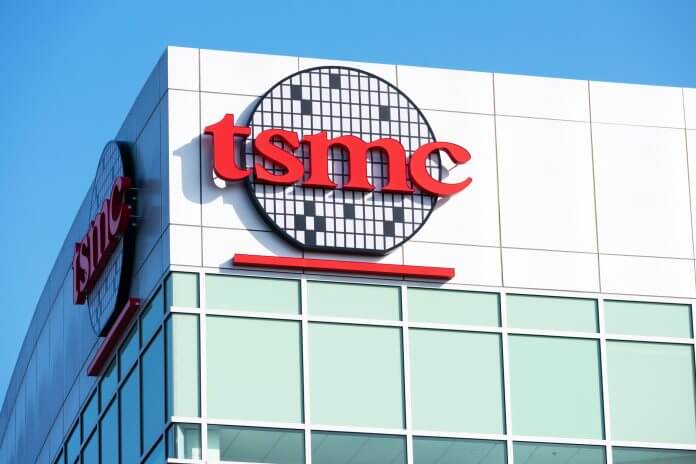TSM stock was trading at $61.33 as of 12:57 PM EDT.
Following a sharp decline in Chinese stocks on Monday and worries that Chinese President Xi Jinping’s tight hold on power may lead to greater restrictions, Taiwan Semiconductor (NYSE:TSM) shares dropped more than 4%. Additionally, according to Bloomberg, Taiwan Semiconductor (TSM), the largest semiconductor foundry in the world, has halted work for Chinese startup Biren Technology as it investigates whether it will be subject to new restrictions on the Chinese semiconductor industry imposed by the Biden Administration.
In the GPU market, Biren Technology competes with AMD and Nvidia (NVDA). On Monday, small gains and losses were seen by AMD (NASDAQ:AMD) and Nvidia (NASDAQ:NVDA). It was announced earlier this month that a number of companies, including Samsung (OTCPK:SSNLF) and Taiwan Semiconductor (NYSE:TSM), would be exempt from the new export regulations for a year. The U.S. chip industry was essentially mixed on Monday despite the terrible news surrounding Taiwan Semiconductor (TSM), helped in part by Bank of America reinstating its buy rating on semiconductor equipment companies.
Bank of America restated its buy recommendation on Lam Research (NASDAQ:LRCX), Applied Materials (NASDAQ:AMAT), and KLA Corp. (NASDAQ:KLAC), noting the CHIPS Act and recent third-quarter results from Lam Research as reasons for confidence.
Even with the concerns associated with the export restrictions to China and the continuous deterioration of the semiconductor cycle, analyst Vivek Arya said that capital equipment businesses should profit from some long-term tailwinds.
Developments likely to impact TSM stock forecast
In a note to clients, Arya stated, “We expect [wafer fab equipment] intensity to dip to 13.4% in 2023 (China restrictions), recover to 14% in 2024 (benefits of CHIPS Act + cycle recovery), and then head back towards its 15-17% range of 2021 and 2022 as equipment demand is redirected to other geographies/customers.”
Arya anticipates that the industry will bounce back from the limits since the previous set of Chinese regulations, which targeted Huawei, were “completely absorbed” in two to three years. Therefore, assuming no “serious” demand destruction from the ongoing dispute between the U.S. and China, there could be an increase in wafer fab equipment spending to reach between $90B and $100B by 2025.
Additionally, there will be around $100 billion in government funding from both the United States and Europe through 2030, along with $10 billion in investment tax incentives from Japan and Korea, which might help make up for the lost $5 billion to $7 billion in demand for wafer fab equipment. In Monday’s midday trade, Lam Research (NASDAQ:LRCX) jumped 0.5%, while KLA Corp. (NASDAQ:KLAC) and Applied Materials (NASDAQ:AMAT) both increased by more than 1.5%.
On Monday, other semiconductor stocks were mixed, with modest gains for Intel (INTC), Qualcomm (QCOM), and Broadcom (AVGO). On the other hand, ON Semiconductor (ON), Analog Devices (ADI), and NXP Semiconductors (NXPI) all experienced losses on Monday as a result of investment firm Barclays downgrading both Analog Devices (ADI) and NXP Semiconductors (NXPI) in addition to a number of other chip companies receiving new ratings. Texas Instruments (NASDAQ:TXN) was upgraded by Barclays as part of rating adjustments, while Qorvo (NASDAQ:QRVO) and Silicon Laboratories were downgraded (SLAB).
Prior to its October 31 analyst day, J.P. Morgan upgraded Wolfspeed (WOLF) in a separate transaction on Monday. According to a report from last week, Taiwan Semiconductor (NYSE:TSM) is considering growing in Japan as it attempts to reduce geopolitical risk in the face of increasing Sino-American tensions.
TSMC (TSM Stock) Reduces Capital Spending By 10% As A Warning To The Tech Sector
Featured Image – Megapixl © Michaelvi















